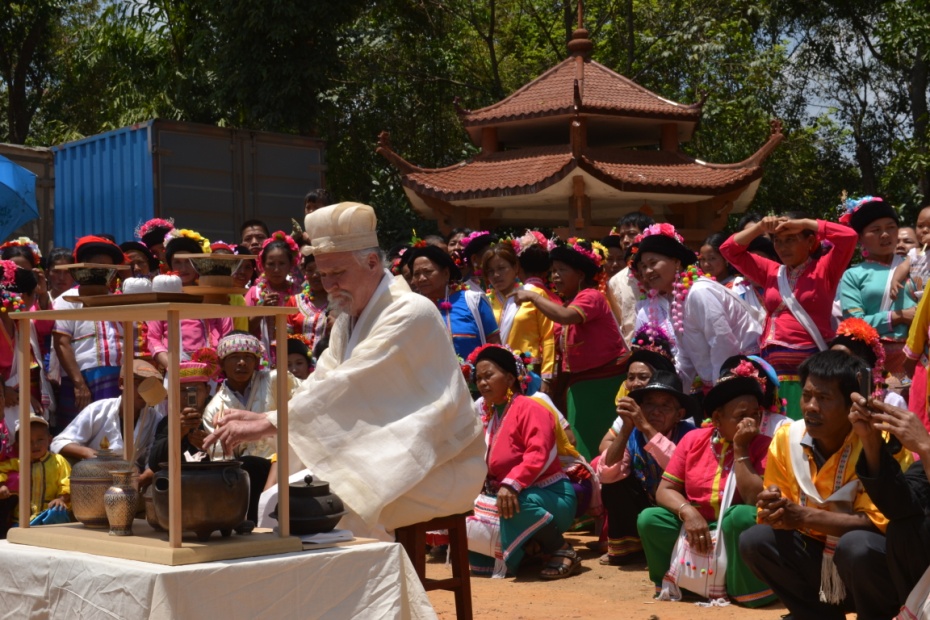A fitting tribute to the birthplace of tea
- By Corey Cooper
 0 Comment(s)
0 Comment(s) Print
Print E-mail China.org.cn, April 25, 2012
E-mail China.org.cn, April 25, 2012
As about 100 Blang crowded around the altar in the center of the village, the white-bearded Bisgaard, dressed in a formal variation of the kimono, performed a traditional way of making tea first introduced in Southern China during the Song Dynasty. He offered two bowls of matcha to the Spirit of Tea. Matcha, popular in Japan, is a vivid green powder ground from dried, unfermented tea leaves. Bisgaard offered both the "thick" and "thin" forms of matcha during his ceremony. After carefully preparing the two bowls of tea using the holy water from the sacred tea mountain, Bisgaard presented the tea to Prince Su, who placed the bowls atop the village's altar for offering.
Bisgaard was first inspired to pursue a lifelong discovery of the treasures and secrets of tea culture after reading Okakura Tenshin's work, The Book of Tea at age 19. Hitchhiking out of his native Copenhagen while still in high school, he visited tea houses in Greece, Turkey, and later the Middle East, and he also developed an appreciation for teaware and tea house aesthetics. After ten years studying Indian philosophy, he eventually decided to return home to study Japanese at Copenhagen University, moving to Japan immediately after his graduation. Residing in Kyoto since 1976, Bisgaard is credited with influencing the popularity of Japanese tea across the globe, especially in his native Denmark. He also teaches tea ceremony and tea appreciation to hundreds of students in Europe, Japan, Indonesia, and India, and has performed tea ceremonies at some of the world's most sacred temples.
Bisgaard first met Prince Su in 2011 while touring the famous tea mountains of Xishuangbanna with a group of tea enthusiasts. Following the meeting, Su invited Bisgaard to perform a tea ceremony the following Blang New Year's day. Bisgaard honored the invitation, stuck arriving in Mangjing on April 14 after two days of travel from Kyoto with a half dozen cases of ceremonial utensils brought over from Japan. Specifically, Bisgaard chose Thai-made benjaron porcelain to make the tea offering due to its connection with Theravada Buddhism, which the Blang people also observe.






